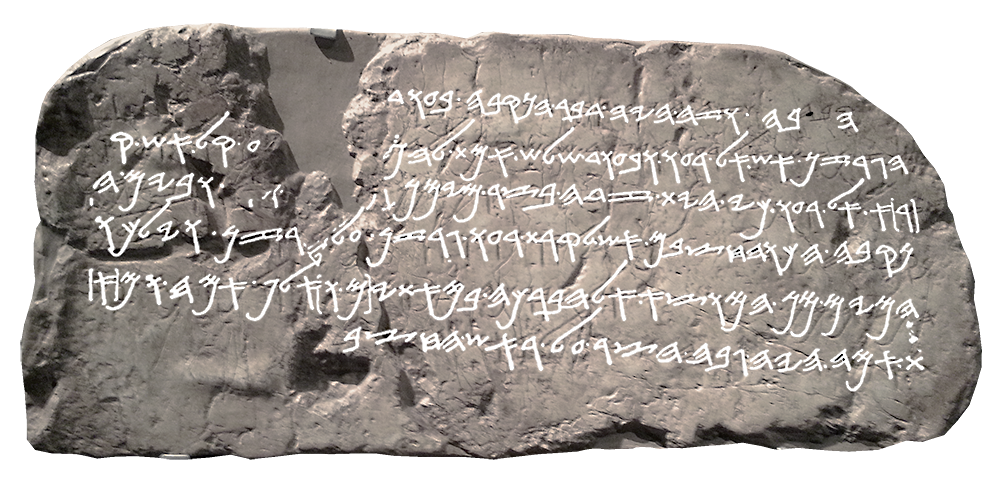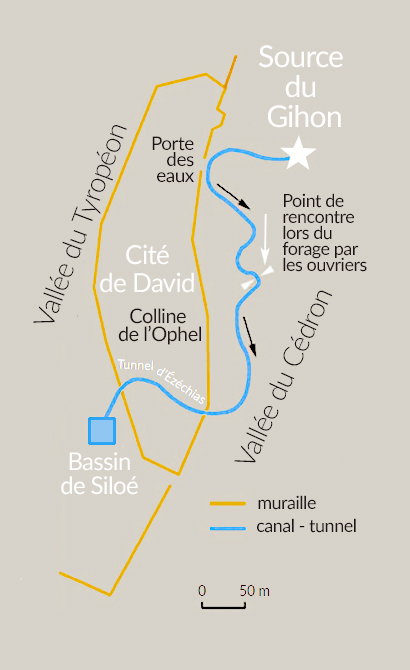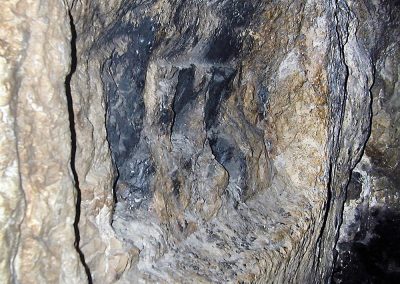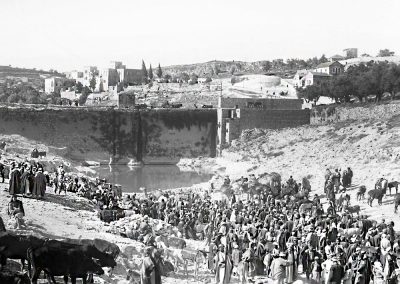
Bible, History, Archaeology
Bible,
History,
Archaeology
Hezekiah's tunnel
and registration
Contents:
Introduction – History according to the Scriptures – Historical background – Dating – Image gallery
Introduction

An inscription, known as the Silwan inscription, was discovered by chance in June 1880, 2 metres high and 6 metres from the outlet of the Pool of Siloam. It appears to be one of the oldest known inscriptions in Paleohebrew (ancient Hebrew). It tells the story of the tunnel breakthrough and, more specifically, of the end of the drilling.
Image opposite: the Hezekiah Tunnel inscription on display today at the Museum of the Ancient Orient in Istanbul, Turkey. Montage © Théo Truschel.
The canal was then explored by the team of captain and adventurer Montagu Brownlow Parker between 1909 and 1911; recent excavations carried out by archaeologist Ronny Reich from 1995 to 2010 uncovered some of the tools and accessories left behind by the Parker expedition.
History according to the Scriptures
Scripture records the following events:
«It was he, Hezekiah, who shut off the upper outlet of the waters of Gihon and made them flow further down to the west of the City of David.» (2 Chronicles 32:30).
«The rest of Hezekiah's deeds, all his exploits, what he did, the reservoir and canal built to bring water to the city, is this not written in the book of the Annals of the Kings of Judah?» (2 Kings 20:20, the book of the Annals of the kings of Judah never reached us).
Historical background

This tunnel, some 533 m long, was dug entirely by the inhabitants of Jerusalem, and even today, specialists remain in awe of the ingenuity of this undertaking. Recent studies have clarified the methods used: it seems that the workers used acoustics on both sides of the tunnel.
Plan of the Hezekiah tunnel, from the source of the Gihon to the Siloam basin © Théo Truschel.
A commemorative plaque marks the point where the two teams meet:
«The tunnel was [completed] ! When [the workers lifted] their pickaxes, each man in the direction of his companion, there were only three cubits left to dig. [hear] the voices of the other workers calling out to them, a breakthrough appeared in the rock to the right and to the left. [left]. On the day of the breakthrough, the workers tapped one against the other, pickaxe against pickaxe. The water flowed into the pool at a distance of 1,200 cubits. The rock above the workers» heads was 100 cubits.".
The original plaque is now on display in Istanbul's Museum of the Ancient Orient. A copy replaces it in the tunnel.
Dating
The tunnel's construction period was confirmed by carbon-14 dating of plant material recovered from the tunnel walls. This analysis has recently been supplemented by radiocarbon dating of certain materials applied to the vault. The dates thus obtained are consistent with around 700 BC. This date seems to correspond to the reign of Hezekiah (c. 716-687 BC).
A scientist, Amos Frumkin, was able to assert that the Siloam Tunnel would be, to this day «one of the best-identified biblical structures».».
The original location of the commemorative plaque. © Todd Bolen.
The original location of the commemorative plaque.



